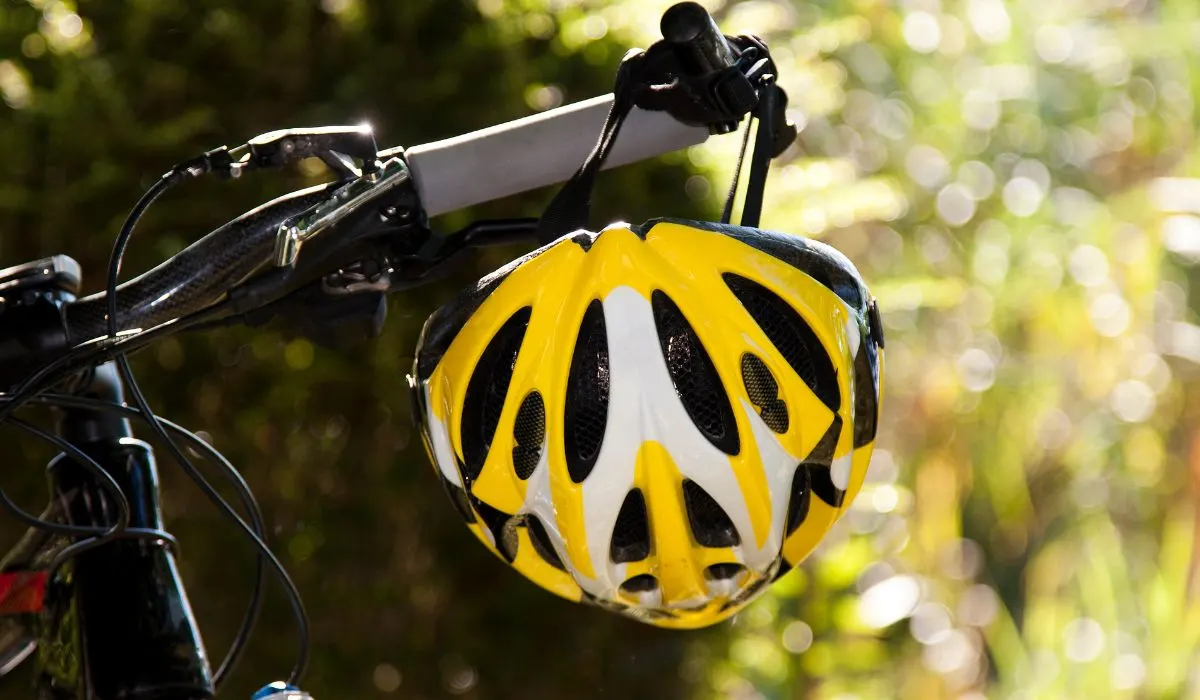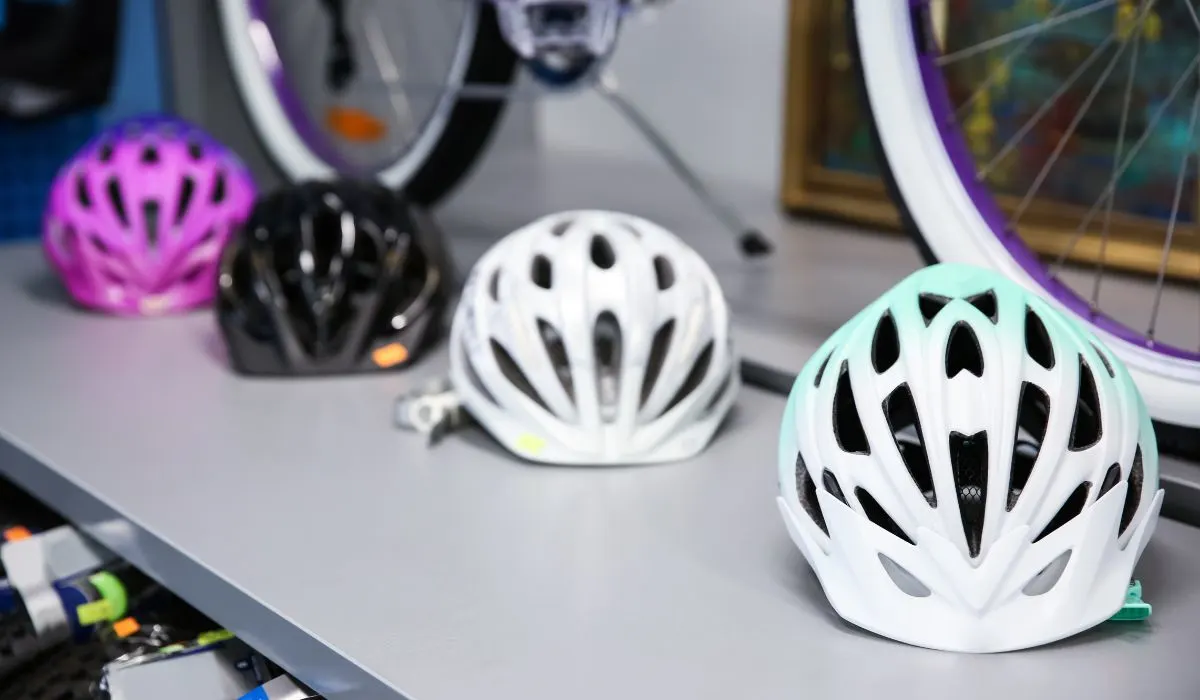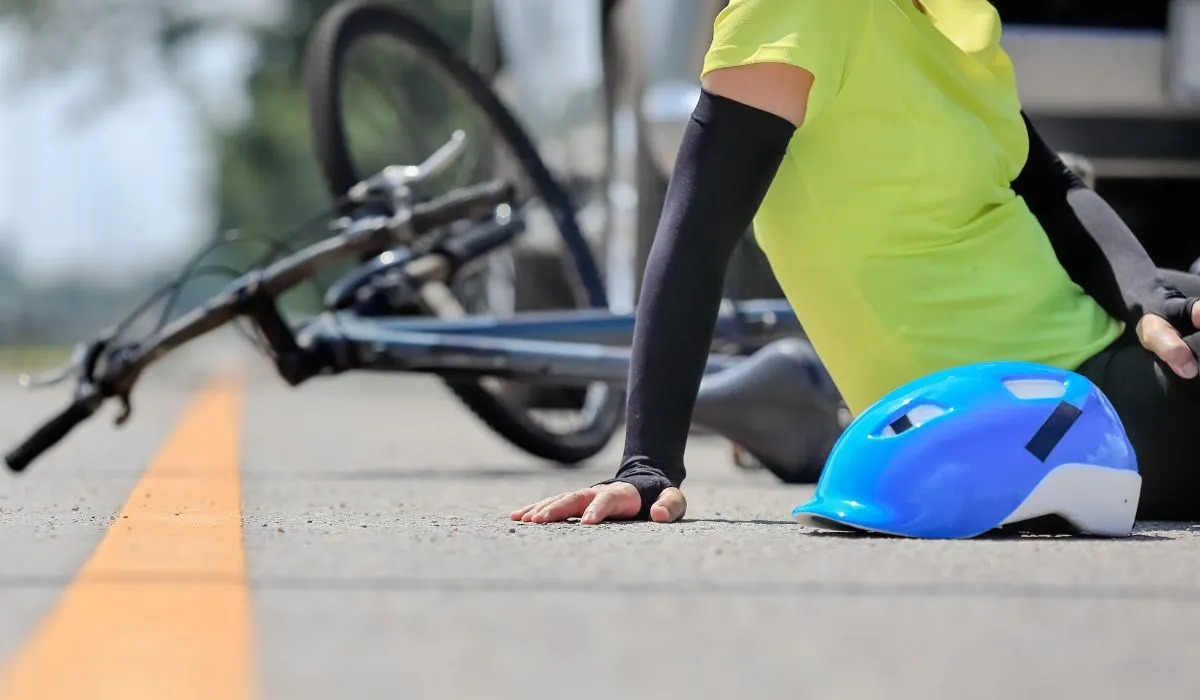
Wearing a helmet is essential for safe bike riding. If you’re looking for a helmet for cycling, you’ve likely encountered bike helmets with MIPS. But what is MIPS, and is it worth getting a helmet that incorporates this technology?
The multi-directional impact protection system (MIPS) is a low-friction, rotation-damping plastic liner added to the inside of bike helmets. Testing shows that MIPS reduces the rotational motion of the head during angular impacts by allowing the head to move 10mm to 15mm in the helmet.
Bike helmets are becoming increasingly sophisticated, and many products on the market utilize MIPS. Are you curious about this innovation in protective helmet technology and whether you should consider using it to increase your bike riding safety? If so, this guide has the knowledge and insights you’re seeking.
What Is MIPS?
MIPS (multi-directional impact protection system) is a patented safety accessory for bike helmets and other protective headgear. This safety feature is a (usually yellow) polycarbonate lining attached to the inside of the helmet.
What Is The Function Of MIPS?
The function of MIPS is to reduce the force of rotational motion on a cyclist’s head in the event of an angular impact.
We will explore the scientific details later, but for now, an angular impact is when two objects collide at an oblique angle. This kind of impact is more common in cycling than linear impacts that occur in a straight line (like falling vertically to the ground).
The design of MIPS aims to decrease the rotational motion of the head and brain that results from angular impacts. Rotational motion occurs when the head strikes an object obliquely and decelerates suddenly while the brain moves or stretches in the skull.
Due to its low-friction characteristic, MIPS allows the head to move 10mm to 15mm within the helmet during oblique impact events rather than being gripped and twisted with the helmet.
Our brains are particularly vulnerable to angular impacts, so decreasing rotational motion has significant safety advantages.
A Brief History And Overview Of MIPS
The history of MIPS begins in 1995 with Hans von Holst, a Swedish neurosurgeon.
von Holst observed that bike helmets protected against linear but not angular impacts. Seeing the need to address this gap, he contacted the Royal Institute of Technology in Stockholm for assistance in developing a technology that protected bike riders’ heads during angular impact events.
Soon afterward, von Holst began collaborating with a doctoral student at the institute named Peter Halldin. In 1996, von Holst and Halldin invented the MIPS and started the prototype testing phase in 2000. The technological innovation was made available to the public in 2007 as a protective feature for horse-riding helmets.
FACT: In 2017, MIPS became a registered company and was listed on the Stockholm Nasdaq stock exchange.
Between 2007 and 2017, roughly 5 million helmets with MIPS were purchased globally. Many helmets integrate MIPS technology, including protective headgear for:
- cycling
- horse-riding
- skiing
- snowboarding
- motor-biking
- military personnel
Over 140 bike helmet brands have protective headgear products that integrate MIPS technology, and many are sold on Amazon for easy purchase. Some of the most well-known and reputable brands offering helmets with MIPS are:

The Advantage Of MIPS on a Bike Helmet: Increased Safety
The most significant advantage of bike helmet MIPS is enhanced safety.
MIPS Reduces Rotational Motion During Angular Impacts
Enhanced protection against brain injuries is the principal advantage of cycling headgear equipped with MIPS. This protective bike helmet feature potentially mitigates the dangerous effects of rotational motion resulting from angular impacts.
In contrast, most bike helmets only offer protection against linear, fracture-causing impact events. Indeed, the certification standards that regulate protective headgear design and manufacturing focus exclusively on linear impacts.
In the event of an angular impact, a helmet with MIPS has an advantage over one that does not incorporate this safety technology.
To appreciate the significance of having a helmet with MIPS, let’s take a closer look at the science of angular impacts, rotational motion, and how MIPS mitigates the risks associated with these dynamics.
What are Angular Impacts?
Angular impacts are when two objects collide at an oblique angle. This type of impact is the most commonly occurring in bike accidents and is distinct from linear (perpendicular) impact events.
According to Peter Halldin, the co-inventor of MIPS, the mean angle of bike helmet impacts is 45 degrees, typically when the rider hits the road rather than a car.
An angular impact’s intensity or tangential force (which accelerates or decelerates an object) is proportional to the angle of the collision and the amount of friction between the two objects. For example, a helmet and road surface.
Consequently, an impact that is close to 90 degrees (perpendicular) and with a high amount of friction results in greater tangential force than a collision with a small angle of impact and a low amount of friction.
FACT: The tangential force of an angular impact is what causes rotational motion in the skull and brain.
What is Rotational Motion?
The rotational motion refers to an object moving around a central axis.
In the case of bike accidents, rotational motion refers to the movement of the head and brain during forceful oblique impact events.
When a rider’s helmet experiences an angular impact, the resulting rotational movement of the head causes the brain to continue moving or stretching after the head has stopped moving.
Injuries Resulting From Angular VS Linear Impacts
Angular and linear impacts are associated with different head and brain injuries.
Linear impact events generally cause skull fractures and brain contusions (bruising). However, as highlighted earlier, angular impacts occur with greater frequency and often cause more harm to the brain than collisions at perpendicular angles.
When a bike rider’s helmet collides with an object at an oblique angle, the resulting rotational motion can produce severe brain injuries.
Angular impact events cause damage such as diffuse axonal injuries. This injury occurs when nerve fiber lesions are distributed across a wide area of the brain surface.
Impacts at oblique angles are also associated with subdural hematoma brain injuries. A subdural hematoma happens when blood fills the space between the brain surface and the skull (called the subdural cavity) and results from the tearing of veins. The rotational motion of an oblique impact could cause this.
Since angular impact events are the most prevalent and dangerous for bike riders, wearing a bike helmet that protects against these impacts is beneficial. This is where MIPS technology comes into the picture.
This low-friction helmet liner increases safety during oblique impacts by minimizing the risks of rotational motion on the head. But how does MIPS do this?
How Does MIPS Reduce Rotational Motion?
The fundamental advantage of MIPS technology is its capacity to mitigate the worst effects of angular impact events.
MIPS enhances the protective capabilities of bike helmets by minimizing the force of rotational motion during oblique impacts. The helmet safety technology achieves this feat by redirecting the force of rotational motion on a rider’s head and transforming it into linear energy.
When a helmet strikes an object like a road surface at an oblique angle, the low-friction MIPS lining allows the rider’s head to slide about 10mm to 15mm inside the helmet in the direction of the impact. This is better than the head being held in place and subjected to the full effects of rotational motion.
The ability of MIPS to redirect and reduce the force of rotational motion means this helmet technology provides added protection for riders’ heads and brains during angular impacts. This advantage is significant when we recall the frequency and potential damage of oblique impact events.
Results from the MIPS team’s rigorous scientific testing program indicate that this helmet feature reduces the force of rotational motion by:
- a minimum of 10%
- an average of 20% to 40%
- a maximum reduction of 50%
Other studies support the claim that MIPS enhances the protection that bike helmets provide.
For example, the results of research published in 2019 showed that helmets with MIPS may reduce the risk of brain injuries by more than 50%. A study of MIPS technology in snow-sport helmets offers further evidence of MIPS’ efficacy as a safety feature for protective headgear.

Cons Of Bike Helmet MIPS
While bike helmets that integrate MIPS technology may provide increased protection during angular impact events, these helmets also have some disadvantages worth considering.
MIPS Helmets are a Higher Cost
Cycling helmets generally cost more when equipped with MIPS. On average, there is a premium of about 10-15% added to the price of helmets with MIPS.
For instance, Abus Viantor produces a high-end helmet that on Amazon is sold without MIPS technology. If you purchase the same helmet on Amazon with MIPS integrated into its interior, the price increases by roughly 25%.
MIPS Helmets Have Reduced Ventilation
The principal drawback of MIPS rotation-damping technology is its impact on riders’ comfort.
MIPS has a soft texture and feels great to wear. However, having MIPS in a helmet restricts the ventilation that helmets provide for riders’ heads by partially blocking the air outlets.
As a consequence, helmets with MIPS have reduced airflow. The extent of the airflow reduction depends on the helmet design. In practice, this ventilation limitation means that MIPS helmets may get more hot and uncomfortable during long or intense rides than helmets without this safety feature.
While brands like POC and Bontrager introduced bike helmets with SPIN and Wavecel liners, these companies continue to offer helmets that integrate MIPS technology.
Laboratory VS Real-World Conditions in MIPS Helmets
Some cycling safety advocates like the Bicycle Safety Institute call for a measure of circumspection regarding the validity of research attesting to the efficacy of MIPS.
The institute notes that actual impact events have unique dynamics and cannot be replicated accurately by studies and tests conducted with dummies under laboratory conditions.
For this reason, the group contends that the positive results achieved in MIPS studies may have limited relevance in real-world impact scenarios.
Nonetheless, as the developers of MIPS highlight, this helmet safety technology has been subjected to nearly 20,000 tests. With thousands of favorable test results, there is an ample body of evidence suggesting that MIPS enhances the protective capabilities of bike helmets during angular impacts.
Alternatives To MIPS Halmets
MIPS was the first rotation-damping, slip-liner helmet technology on the market, and helmet companies used this technology in their helmets exclusively.
However, over the last few years, some companies started to source or produce alternatives to MIPS called SPIN (shearing pad inside) and Wavecel.
While brands like POC and Bontrager introduced bike helmets with SPIN and Wavecel liners, these companies continue to offer helmets that integrate MIPS technology.
It is also worth noting that these companies have progressively reduced the number of Wavecel and SPIN helmets in their catalogs in favor of MIPS-equipped headgear.
For this reason, it is reasonable to conclude that MIPS is still a leading bike helmet safety technology worth considering if you’re looking to maximize your safety.
Frequently Asked Questions About MIPS Helmets
The topic of multi-directional impact protection systems for bike helmets is vast and complex, here are the answers to several of the most frequently asked questions about bike helmet MIPS.
Do MIPS Helmets Make A Difference?
As we’ve seen, there is considerable evidence MIPS helmets make a difference in the case of a biking accident.
Extensive anecdotal experiences, combined with scientific testing suggest that helmets offer more protection with MIPS technology. MIPS-equipped helmets protect riders from angular impact events and the resulting rotational brain injuries.
In contrast, helmets that don’t have MIPS only protect against linear impacts, which are generally less common and hazardous to the brain than angular impacts.
How Much Better Are MIPS Helmets?
Tests and research show a quantifiable benefit to having a MIPS-equipped helmet rather than one that doesn’t contain this low-friction safety liner.
The results of scientific inquiries show that cycling helmets with MIPS is at least 10% better than helmets that don’t have this safety feature, and sometimes higher.
However, it is crucial to recognize that bike helmets vary in their:
- designs
- materials
- qualities
A high-end bike helmet that doesn’t have MIPS might offer more effective head and brain protection than a budget cycling headgear product with MIPS.
Can I Add MIPS To My Helmet?
You can’t add MIPS to your helmet. This protective technology comes installed as a permanent fixture in newly-purchased bike helmets.
There is no option to purchase a MIPS liner separately to insert it into a helmet. Bike helmet manufacturers install MIPS because they have the expertise and tools to connect the low-friction liner correctly.
Proper installation of MIPS is critical for ensuring it functions effectively and provides maximum protection to riders.
Can You Remove MIPS From A Helmet?
It is possible to remove MIPS from a helmet. However, this is not an advisable practice.
To remove a MIPS lining from a helmet, you have to cut it out with a sharp, stiff blade. The process of taking MIPS out of a biking helmet is physically demanding and poses the risk of injuring yourself.
At the same time, it is tricky to remove MIPS from a helmet neatly. If you try to take the liner out, you risk causing damage to the helmet.
Does MIPS Make A Helmet Bigger?
The MIPS safety feature makes the helmet slightly bigger. This increased size is due to the extra space that the connecting anchors of the liner create between the rider’s head and the helmet. As a result, helmets with MIPS sit slightly higher on the head, which makes them appear larger.
Having said this, MIPS-equipped helmets generally have a more snug fit, so they feel smaller than protective cycling headgear that does not incorporate the technology.
Consequently, if you’re planning to get a helmet that has the MIPS feature, it is advisable to try a larger size than you would ordinarily wear.

Is The MIPS System Worth It?
We are justified in arguing that the MIPS system is worth it based on:
- multiple scientific studies
- thousands of product tests
- countless consumer reviews
The inclusion of MIPS increases bike helmet costs and may also reduce riders’ comfort. Nevertheless, the MIPS system enhances the level of protection that helmets provide and mitigates the risk of skull and brain injuries.
The safety advantage that the MIPS system imparts to cycling helmets makes this low-friction, rotation-damping technology worthy of consideration by anyone looking to purchase a bike helmet.
It is especially worth considering MIPS if you’re planning to buy a budget bike helmet due to the additional protection that the technology affords. In most cases, the enhanced protection against rotational injuries justifies the marginal price premium of bike helmets equipped with the MIPS system.
Conclusion
Wearing a bike helmet with MIPS technology provides improved protection compared to cycling headgear which doesn’t have this safety feature.
MIPS offers increased protection when a cyclist’s helmet collides with an object at an oblique angle. These angular impacts are the most prevalent and potentially dangerous collisions in bike riding.
The low-friction MIPS liner redirects the rotational energy by allowing the rider’s head to slide in the helmet during angular impact events.
Consequently, MIPS decreases the risks of brain injuries resulting from angular impacts by reducing the force of rotational motion on the head and brain caused by collisions at oblique angles.
You might also be interested in:
